The Best Performance Tires

When winter comes to an end, it’s time to remove all that specialty rubber and put on some warm-weather appropriate tires.
Performance tires (also called summer tires) are made of no-compromise rubber that is perfect for warm weather. This is in contrast to all-season tires (or no-season tires, as we like to call them), which are designed to cover a lot of conditions and end up not being perfect for any of them.
Summer performance tires are grippier in dry conditions and wet conditions when compared to all-season tires. This is due to a number of reasons including compound and tread patterns. They’re impressive, but the downside to performance tires is that they’re completely unusable in snowy and winter conditions. Generally, you don’t want to drive on them in temperatures below 40°F/4°C. You definitely have to be proactive about switching tires at the right time of the year and have the storage space to have two dedicated sets of tires. But the advantages beyond having superior performance in the summer is that your tires last twice as long. Unless you drive like we do…
There are four sub-categories to performance tires:
- Grand Touring Summer Tires: Best suited for use on luxury cars or sports sedans. They blend the usual performance tire elements of good dry and wet handling with lower noise levels and improved comfort through different rubber compounds, tread patterns and often taller sidewalls.
- High-Performance Summer Tires: A step up from Grand Touring tires, but aren’t as focused on noise and comfort. They’re a good compromise for daily driver sports cars and sedans.
- Ultra High-Performance Summer Tires: Prioritize handling and response, offering a sharper feel on the road alongside added grip in dry and wet conditions.
- Max and Extreme Performance Summer Tires: Two no-compromise tiers of tires that are stiffer and more responsive than the other categories of performance tires. They give you ultimate grip, feel and responsiveness, but trade off lifespan and put less emphasis on wet traction.
Here are a few good bets in each of those categories.
1. Editors Pick: Michelin Pilot Sport 4S
The Michelin Pilot Sport 4S is a relatively new max performance summer tire that has been specially designed with a focus on cars from automakers like BMW, Mercedes, Audi, and Porsche, using technology developed through those automakers' motorsports programs. These tires are designed for top performance in both dry conditions and warm, wet roads too.
It uses an asymmetric tread pattern and a compound derived from Le Mans racing. The outer shoulder features a dry-focused tread that improves handling and braking, while the center ribs and inbound shoulder are designed for improved wet braking performance. There are even a few exterior callouts, like a checkered sidewall for select sizes. There are many sizes of Pilot Sport 4S tires and they're great fits for a wide variety of cars including luxury sedans, sports cars, and sports sedans. Critics say that these tires are loud, expensive and don't feature any rim protection.
Pros | Excellent dry traction, good wet weather performance, well reviewed |
Cons | Loud, expensive, don't have any rim protection |
2. BFGoodrich G-Force Sport Comp-2
BFGoodrich is an expert when it comes to tires because of its long history with motorsports. They provide the tires used at the Ford Racing High-Performance Driving School at Miller Motorsports Park, and Skip Barber Racing, for their various schools and racing series. So naturally, the tires they use are pretty high-level.
The g-Force COMP-2 improves every sporty characteristic of a vehicle, by improving the acceleration, cornering and braking distances with its race-derived compound. There are stable shoulder blocks, as well as twin center ribs that help improve traction in both wet and dry conditions and help prevent hydroplaning. These tires also feature steel belt reinforcements and are extremely stiff, which means it will be very stable and responsive when cornering. Some reviewers call these tires extremely stiff and uncomfortable with a very low treadwear rating. However, we've gone though three sets on various AutoGuide personal vehicles and have been more than satisfied. Our only gripe is that you won't get more than 25,000-30,000 miles out of them, which isn't that much for the cost.
Pros | Precise tires, good wet and dry traction |
Cons | Loud, stiff, short lifespan |
3. Bridgestone Potenza RE760 Sport
Bridgestone Potenza tires are some of the most popular tires on the market for a number of reasons. They work really well on performance vehicles, sports cars, and sporty coupes with a focus on driving pleasure, without the usual sacrifice that comes with performance tires. Bridgestone manages this without an advanced, high-tech compound by shaping the tread into an asymmetric tread with a 3D center block, which helps enhance dry traction and cornering.
Bridgestone also says that they've focused on three primary tire elements—the beads, casing, and tread—to enhance comfort as well as handling and traction. Critics say these high-performance tires have excellent dry performance and are really comfortable, but suffer a bit in the wet and are a bit underwhelming in terms of longevity.
Pros | Great dry weather performance, comfortable |
Cons | Longevity, wet weather performance |
4. Michelin Pilot Super Sport
The Pilot Sport is Michelin's halo tire. It is frequently seen on exotics and supercars, vehicles that demand the most performance possible. These are the choice for drivers who want an uncompromised tire that delivers lots of grip, engagement, and dry weather confidence. It's race tested throughout just about every demanding series you can think of, including Le Mans. It has a similar design to the Pilot Sport 4S, but they're lighter and even stiffer than the Pilot Sport 4S. They're also much quieter than some other Michelins. Buyers looking for lots of grip will be pleasantly surprised, but these tires don't do well in the wet and are very expensive.
Pros | Excellent grip and performance. Quiet and Light |
Cons | Expensive, not great in the wet. Poor longevity |
5. Continental ExtremeContact Sport
This is the Continental answer to the Michelin Pilot Sports. It's a max performance tire, designed to deliver uncompromised driving pleasure. It uses a special summer only compound, so people who want to use these tires later in fall or early in spring might be disappointed. It has a five or six-rib design, depending on the width of the tire, which helps improve the tries wet weather capability and noise mitigation. There are also wide tread blocks, which help with grip and handling. The advanced compound is well suited for damp, but warm conditions and many love Continentals performance indicators, which are molded into the tread pattern to show you whether the tire is too worn out to be used in the wet. They're expensive and they don't last very long, but they're cleverly designed with a lot of performance. Continental ExtremeContacts are another tire AutoGuide staff has spent our own money on for our personal vehicles and been very satisfied with.
Pros | High performance, comfortable and low noise |
Cons | Pricey and not that durable |
6. Bridgestone Turanza ER30
Unlike the other tires on this list, the Bridgestone Turanza ER30 is a grand touring performance tire, with a deeper focus on comfort and noise in comparison to the others on this list. It's used as the original equipment on a number of luxury cars from BMW and Porsche, and can blend comfortable handling with performance. This is done by molding a summer tire compound into a specific way, with lots of grooves to improve wet weather capability and noise. It's not among the highest performing tire here in terms of grip but it still handles and comes with many benefits for buyers who don't want the most hard-edged tire out there.
Pros | Quiet, Comfortable |
Cons | Tread wear |
7. Michelin Primacy HP
These Michelins may seem kind of average, but they have a hidden secret—they're designed to improve fuel efficiency. The Primacy HP also uses Michelin's Green X standard for eco-focused manufacturing and low rolling resistance, meaning you can feel good when driving on these. They're pretty good all around in terms of performance and don't feature an above average rating in any one area, but they last long, are fairly quiet and get the job done.
Pros | Improves fuel economy, long lasting |
Cons | Not particularly good performing great in any one area |
When Should I Switch to Performance Tires?
Performance tires just don’t have any traction in cold weather. Anything colder than 40-45 degrees Fahrenheit is too cold for performance tires. Additionally, temperature fluctuations will impact tire pressure too, so jumping to switch your tires the moment its a little bit warm might be premature… but waiting for the first week of spring will be ideal. Removing your winter tires should be done well in advance of any snowy weather. They’re not just bad in snow, but when it gets cold they get stiff and don’t grip even pavement. Change them as soon as the forecast predicts temperatures below 45.
Why Do You Need Performance Tires?
Performance tires are prepared for any conditions except for snow. They will help provide more responsive steering, shorter braking distances, can be quieter, and can work well in wet weather too, resisting hydroplaning and skidding. Since all-season tires have to accommodate all weather conditions, they’re compromised and can’t focus on excellent performance in warm conditions. Performance tires can, so they’ll afford you a better experience on the road.
Good tires aren’t just about performance, they’re about safety. Performance tires will improve steering response and braking distances compared to all-season tires, which is something that should be appreciated by all drivers, not just drivers of sports cars.
How Do They Work?
There are a number of reasons why summer tires work so well in warm weather. The most important part is the compound, which is the make up of the rubber in a tire. Unlike winter tires that are flexible in the cold, performance tires are grippy but stiff in order to provide excellent handling characteristics. In order to keep things sticky while also being stiff, tire makers have started using unique materials and ingredients in the tires. Yokohama, for example, uses orange oil, which is billed as one of the stickiest natural substances in the world.
But while the construction is a major part of the summer tires success, so is the tread pattern. They usually have wide grooves that help with water evacuation, making performance tires good in wet weather as well. By removing as much water between the road and the tire, you can get traction and experience less hydroplaning.
Finally, the pattern of the tread of summer tires is designed to mitigate tire and road noise. This is done with precision grooves, which disrupt the airflow within the grooves, which make the quieter too.
Most performance tires feature lower treadwear ratings than all-seasons, which is because they’re grippier and won’t last as long. Some performance tires are asymmetrical, which will limit the ability to rotate them too, which again ensures that they’ll be the most responsive tires you can get, due to the focused design.
Recent Updates
September 21, 2021: Added a promoted product recommendation. Corrections and updates.
February 28, 2020: Corrections and factual revisions.
We are committed to finding, researching, and recommending the best products. We earn commissions from purchases you make using the retail links in our product reviews. Learn more about how this works.
Photo credit: David Traver Adolphus / AutoGuide

Sami has an unquenchable thirst for car knowledge and has been at AutoGuide for the past six years. He has a degree in journalism and media studies from the University of Guelph-Humber in Toronto and has won multiple journalism awards from the Automotive Journalist Association of Canada. Sami is also on the jury for the World Car Awards.
More by Sami Haj-Assaad





















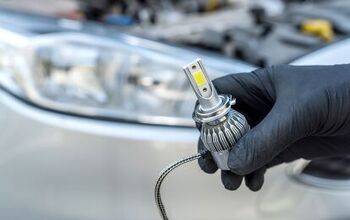

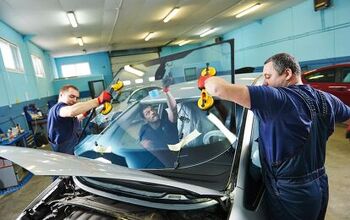
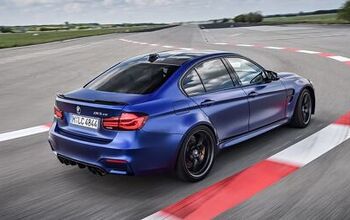
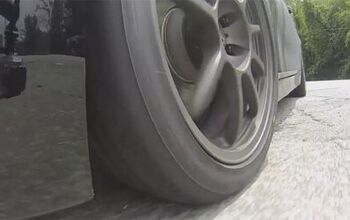

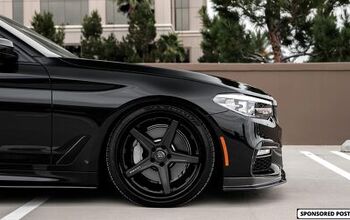


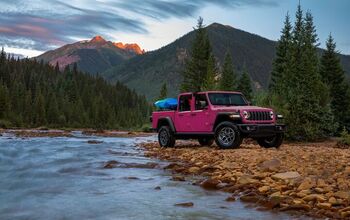

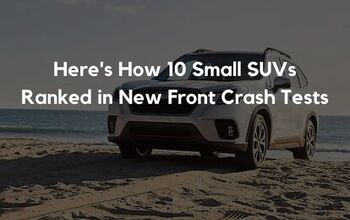


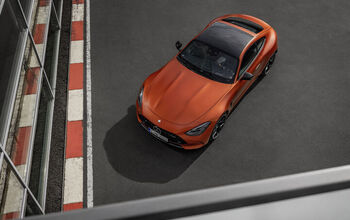

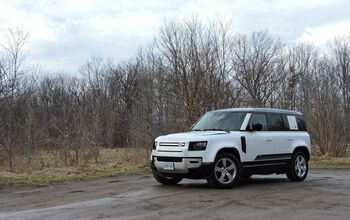

Comments
Join the conversation